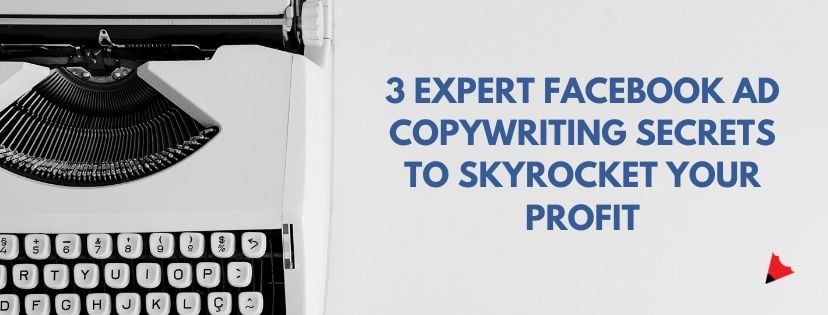
"Nobody reads ads. People read what interests them. Sometimes it's an ad."
This famous quote by Howard Gossage is a testament to the interruptive nature of ads on digital devices.
Advertisers from various industries are continuously bidding to grab the attention of users to sell their products and services.
This in turn, inundates users, leading them to ignore ads that don’t immediately appeal to them - visually or verbally.
This phenomena then leads to Facebook advertisers clamouring out product/service features using poor Facebook ad copywriting to survive in a crowded marketplace.
If this sounds familiar & if your social media campaigns aren’t performing up to their expectations, you’ve got a creative problem to address immediately.
A poorly-drafted ad not only costs you more money, but can also damage the image of your brand, in certain cases.
In a Facebook ads experiment conducted by AdEspresso, results indicated that poorly performing ad text costs 2.4 times per lead than the best-performing version (more about this in Secret #2 as you read along)
A well-written ad wouldn’t let users scroll past it, without communicating the message unto them effectively.
In the words of American author, Robert Collier - ”Decide the effect you want to produce in your reader.”
Your ads should make prospects take the action you want them to.
Let’s get this straight!
You are spending either yours or someone else’s money on Facebook advertising, and the sole purpose is to get back your money’s worth.
Good copy can help you be more persuasive, exciting, knowledgable, helpful and entertaining to your target audience.
So the main question still remains..
How to actually write effective Facebook ads that give results?
The solution here is to create relevant, targeted and distinguishable Facebook ads that cut through the clutter and build rapport with your prospects.
And that’s exactly why we’re here!
To help you create ads that will level up your Facebook advertising game and dominate your competitors.
With these 3 unique Facebook ad copywriting techniques, give your tiring campaigns a fresh start, increase engagement and smash those conversions for good!
Before we proceed to the 3 Secrets of Facebook Ad Copywriting, let’s quickly revise the fundamentals of a successful ad.
- What are you offering them: It should have the key value proposition right in the ad image (wherever possible);
- How does it benefit them: Focus more on benefits and advantages, rather than features and specs;
- What should they do next: Communicate the purpose of the advertised product/service and instruct what action users are supposed to take.
FB Copywriting Secret #1 : Keep it Short and Crisp
"Make it simple. Make it memorable. Make it inviting to look at. Make it fun to read." – Leo Burnett
The temptation to cram your ad with everything about your company is real, but to your target customers, “reality is often disappointing”.
Sorry to say, but your target audience doesn’t give a damn about your superficial company statements and boast-worthy news.
All they care about is - how can your product/service make their life easier.
People don’t buy products. They buy better versions of themselves. They avail your services to spend more time doing things they love.
That's about it.
The actionable advice in this secret is to keep your ad copy short, crisp and to the point.
In the simplest words, explain why you are helpful to them.
Your ad could be scary, thought-provoking, entertaining, helpful or anything else- as long as it works on your audience.
Take the example of the following ad we created for one of our clients who’s a financial advisor.
His objective was to generate leads for critical illness insurance.
Having spent enough time in the industry to know how difficult selling insurance can be, we decided to focus on why people need insurance.
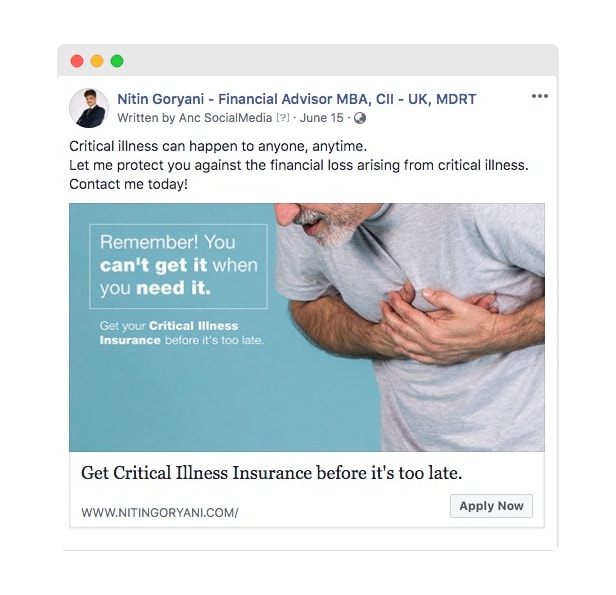
Our ad highlighted the harsh truth about life insurance and made people uncomfortable enough to take action before it’s too late.
We deployed something called the “Power of One”.
In layman terms, we focused on one central idea - That you cannot get life insurance when you need it the most.
The same was communicated using the image, headline and copy.
A clear call-to-action “Apply Now” helped generate leads of interested insurance applicants.
You might be thinking,
“How can I come up with the one main idea?”
It’s very simple - just choose the biggest problem you can solve for your target market and promote it with clarity and concise copy.
Another application of Short-form ad copy is the following ad we ran for UAE Global Education Fairs - they’re the largest student fair in the region.
 In very less words, by using emojis, we communicated everything people needed to know about the exhibition, including factors like:
In very less words, by using emojis, we communicated everything people needed to know about the exhibition, including factors like:
- What can they find there?
- Where’s it happening?
- Dates and Time?
- Call to action
You can adapt this idea to create ads for promoting one-off promotions, offers, strong calls-to-action, one central problem, one best solution etc.
The possibilities are endless.
Just remember not to add superfluous words or facts that can confuse your prospects.
You can begin with the “1 ad, 1 message” policy to simplify your thought process and avoid getting overwhelmed by the amount of information in your head.
FB Copywriting Secret #2 : Long & Descriptive Copy Works Wonders too!
"The consumer isn't a moron; she is your wife. You insult her intelligence if you assume that a mere slogan and a few vapid adjectives will persuade her to buy anything." – David Ogilvy
By spilling this secret, we’re in no way contradicting Secret #1 about using short copy.
Each ad copy serves its own purpose, if written correctly based on deeply understanding the target audience, their pains and aspirations.
We advocated short copy first because it’s easier to consume and write as compared to its longer counterpart.
Although copywriting isn’t rocket science, it sure as hell isn’t everyone’s cup of tea.
A successful Facebook ad copywriter demonstrates sympathy combined with the ability to engage readers until the end of the ad, then encourages them to take the desired action.
So, why does long-form copy work?
A single word answer would be - QUALIFICATION.
If you manage to hold your readers’ attention throughout the ad, you’ve either written something really humorous or qualified them enough to pay attention till the end.
That’s what I mean by Qualification.
If you recall the quote at the beginning of this article:
"Nobody reads ads. People read what interests them. Sometimes it's an ad."
Lead pre-qualification is just one interpretation of this quote.
AdEspresso recently ran a Facebook Ad Copy Length experiment where they tested seven different types of ads for the same offer.
Here’s an overview of the ad types: where everything was the same for each ad except for the copy.
- Variation A: One Sentence, Version A (claim with data)
- Variation B: One Sentence, Version B (question)
- Variation C: Bullet Points
- Variation D: Bullet Points + Emojis
- Variation E: One Paragraph
- Variation F: Three Paragraphs
- Variation G: Six Paragraphs
The results are as follows:
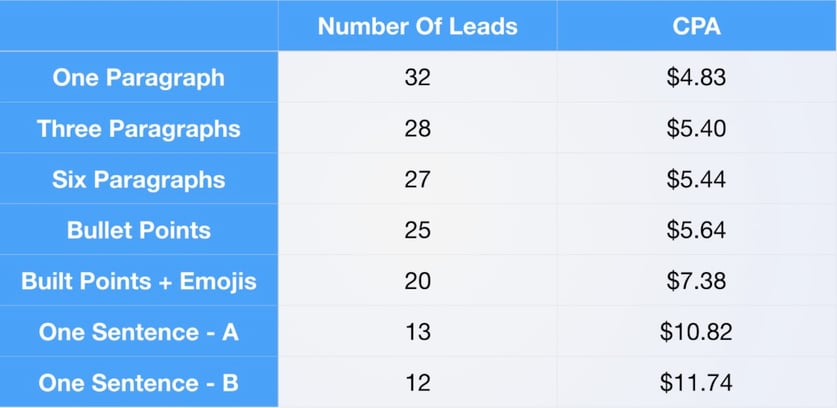
As you can see:
- Variation E: One Paragraph was the ultimate winner, followed by
- Variation F: Two Paragraphs and then
- Variation G: Six Paragraphs.
The inference here is that - longer copy performed better, generated more leads and even had the lowest cost per acquisition among the others.
You can use long copy in a scenario, where you need to deploy storytelling to creatively/fully explain the message of the ad or the countless benefits available for prospects.
Some direct response copywriters write multiple paragraphs in Facebook ads to engage readers at a supernatural rate.
It all comes down to how clear and interesting your copy is.
Here’s an example of a long-copy ad used to promote one of our flagship articles.
Notice how we first intrigued readers with questions they’ll be interested in, followed by the benefits of the article that’s being promoted in the ad.
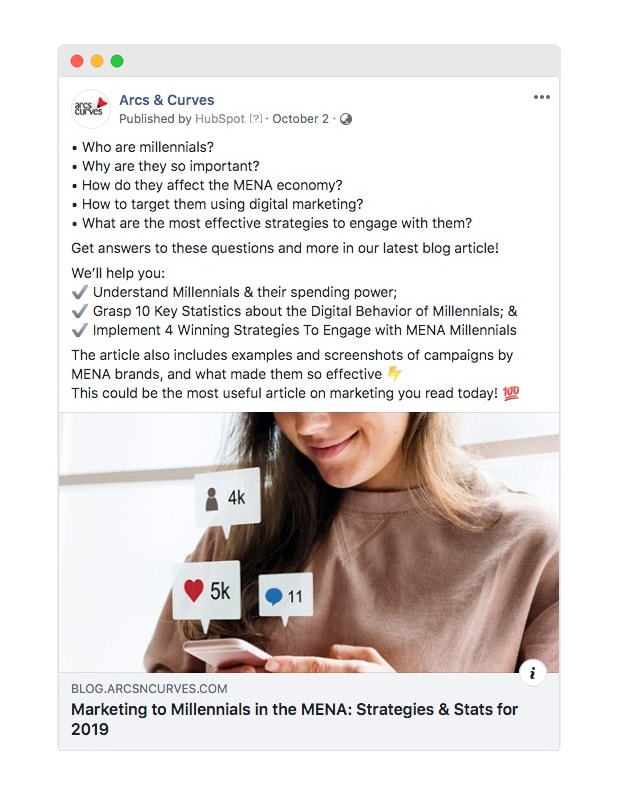 If the title of article made you curious, you can read the complete piece in the link below:
If the title of article made you curious, you can read the complete piece in the link below:
FB Copywriting Secret #3 : Add Testimonials into The Ad Copy
“Nothing draws a crowd quite like a crowd.” – P.T. Barnum
People buy from people.
They tend to trust their peers’ feedback when it comes to trying out products/services.
By using customer testimonials, you can win the trust of prospects who are similar to your satisfied customers.
Testimonials are genuine and human endorsements of your offerings by people who have actually used your product.
They help you establish credibility in a doubtful scenario, and in the digital space, a second’s worth of doubt can make you lose the deal.
Trying out a new product/service an be a daunting task filled with uncertainties and inhibitions about having expectations met.
The fear of making a costly mistake is way worse than the fear of missing out (FOMO) on a new product.
That’s why we’ve recommended using Testimonials in your ad copy.
Not only do they look welcoming, genuine and more conversational, but these peer-to-peer reviews work wonders for new customers who are battling with moments of hesitation.
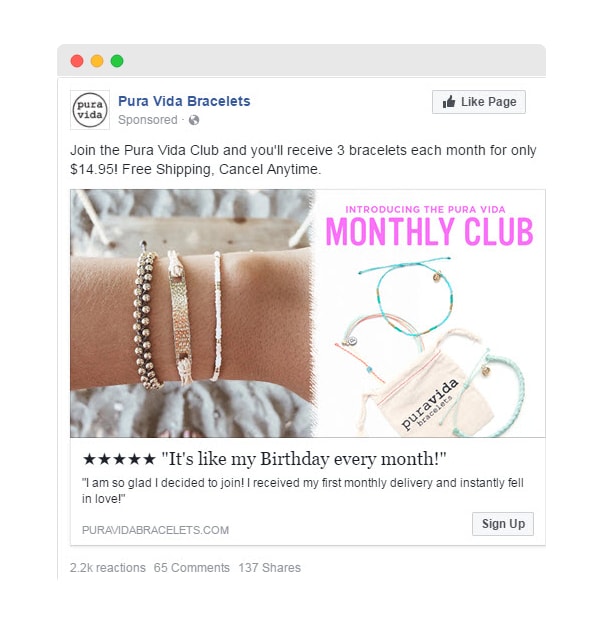 Real testimonials from real people can accelerate the decision-making process, making your ad perform better than its counterparts.
Real testimonials from real people can accelerate the decision-making process, making your ad perform better than its counterparts.
By utilizing your customers’ words, you can make a positive impact on your advertising strategy, thereby improving your conversion rates.
The beauty of Facebook ad copywriting is that you don’t have to work hard every single time, to write the most creative ad.
You have to simply work smart, and keep an eye out for opportunities that you can leverage.
For example, if you’ve got some positive PR around your brand, we highly recommend using quotes from there in your ads.
In the case of new products & services, the effectiveness of the ad copy is directly linked to the popularity of the review sources.
You can ride on the popularity of their reviews by simply incorporating them into your ads.
This way, it doesn’t even look like shameless self-promotion.
For example, a men’s fashion brand can use reviews from GQ to evoke trust in the minds of prospects.
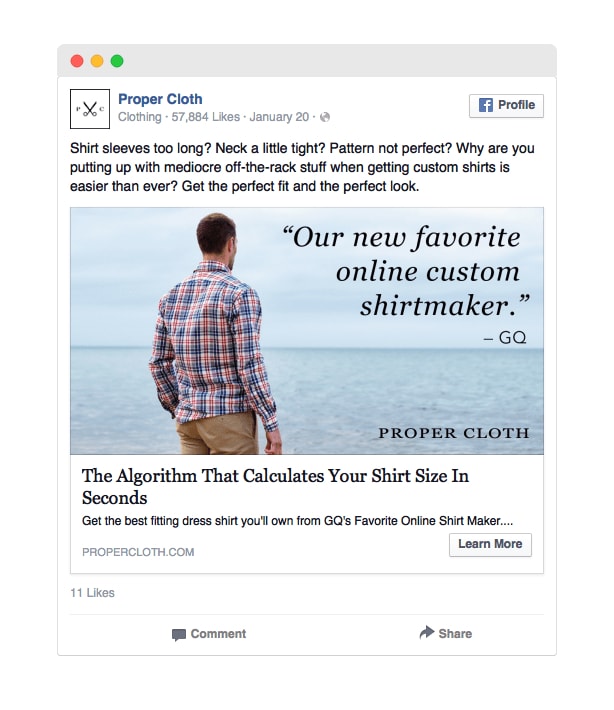
Bonus Tip:
If your testimonials include data and figures given by customers, give first preference to those with odd numbers, instead of rounded-off event numbers.
Numbers like 27% or 71% tend to look more realistic as compared to 30% and 70% in the context of data-driven testimonials.
The exactness of those figures makes them appear more genuine and trust-worthy
Professor Malia Mason of Columbia University Business School says using an exact number rather than a round one “signals that you have more knowledge about the value of the good being negotiated.”
Here’s an excellent resource to make the most of your customer testimonials.
Conclusion:
"When I write an advertisement, I don’t want you to tell me that you find it ‘creative.’ I want you to find it so interesting that you buy the product." – David Ogilvy
As a marketer and entrepreneur, your focus is to continually grow your business to the point of being profitable and beyond.
With so many moving parts in your marketing and customer acquisition strategy, it can be tough to pay special attention to your Facebook ad copies.
That’s why, we wrote this article - to breathe new life into your struggling ads along with imparting social media advertising secrets most agencies don’t share.
We don’t know what we don’t know.
That’s why, it’s important to always be curious and continuously observe the ads you see on your newsfeed.
Ask yourself questions like:
- “What made me stop scrolling and see this ad?”
- “Why am I so drawn to this ad?”
- “Why do I feel like this ad is talking to me?”
Once you’ve obtained the answers to these questions, reverse engineer the tactics and try applying them to your Facebook and Instagram ads.
After all, If you “steal” from one, it's plagiarism; if you “steal” from many, it's research.
It’s helpful to get a unique perspective from someone besides you and your marketing team.
It could be your sales team, a friend, a freelancer, an industry peer - basically anyone else in your circle.
We also recommend reading the book, “Steal Like An Artist: 10 Things Nobody Told You About Being Creative”, to get those brain cells ticking again.
One last thing!
Some time ago, we had interviewed marketing thought-leaders across the UAE for their advice on the worst marketing mistakes and how to rectify them.
We think it’ll be a great resource to give unique insights and a fresh perspective to your marketing campaigns.






.jpg?width=965&name=Hiring%20social%20media%20agency%20cta%20(1).jpg)



